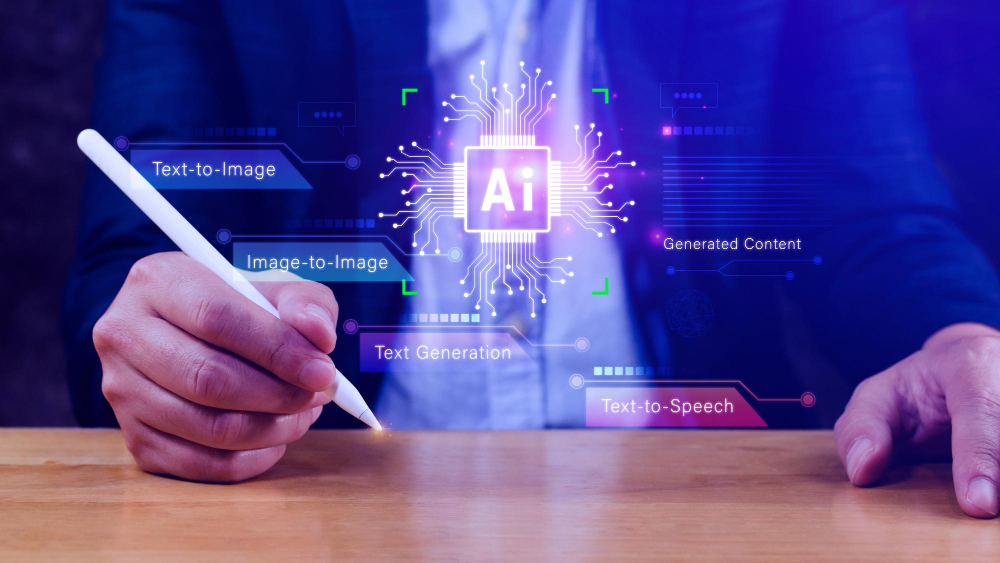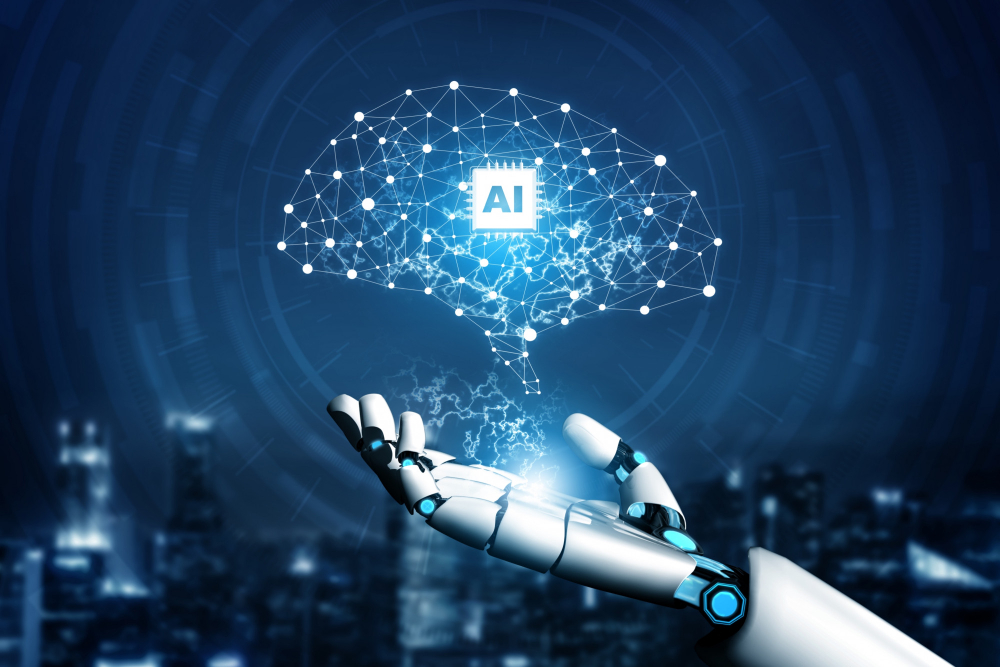Although still in their early stages, generative AI coding tools are already revolutionizing the software development process for both developers and companies. Generative AI has the potential to significantly enhance developer and business productivity by automating tasks, enhancing communication and collaboration, and offering valuable insights to support informed decision-making.
In this article, we will delve into the evolving landscape of companies embracing generative AI to accelerate software development. This will include:
- Defining generative AI and its capabilities
- Highlighting the transformative impact of generative AI coding tools on the developer experience
- Demonstrating how companies are harnessing generative AI to expedite software delivery.
Generative AI, a subset of artificial intelligence (AI), encompasses systems created with the capability to produce novel content akin to human-generated materials. These AI models undergo training on extensive datasets spanning various content types, including text, images, audio, music, or code.
In contrast to conventional machine learning, which primarily focuses on predicting or categorizing data based on established patterns, generative AI diverges by discerning underlying data structures and patterns and subsequently leveraging this knowledge to rapidly generate fresh content. The key distinction lies in the scale and scope of the output: while machine learning often predicts the following word, generative AI has the capacity to generate entire paragraphs or more.
Generative AI tools offer a wide range of business applications:
- Software Development: These tools aid developers in coding tasks such as code generation, editing, and testing.
- Content Creation: Writers can utilize generative AI to craft tailored product descriptions and advertising content.
- 3. Design Assistance: Generative AI supports designers by generating layouts and assisting in graphic design.
- Video Production: Videographers benefit from generative AI for video and image creation, editing, and enhancement.
- Language Translation: Translators leverage generative AI to produce content in multiple languages.
- Personalization: Businesses use generative AI to customize products and services to cater to individual customer preferences.
- Operational Efficiency: Generative AI tools are valuable across operations, helping with tasks like supply chain management and pricing optimization to enhance overall efficiency.
Generative AI tools offer valuable support in software development by:
- Automating Code Generation: They assist in creating boilerplate code for different programming languages and frameworks, reducing the manual coding effort.
- Enhancing Code Understanding: Generative AI can extract information from documentation, aiding developers in comprehending the code’s functionality and purpose.
- Security Enhancement: These tools can detect potential security vulnerabilities within the codebase and propose solutions for implementation.
- Code Review Assistance: Generative AI aids in streamlining the code review process, ensuring that new or modified code is thoroughly assessed before merging into the project.
Using generative AI responsibly
In February 2023, a consortium of 10 companies, including OpenAI, Adobe, and the BBC, came together to establish a fresh set of recommendations for the responsible use of generative AI content. In collaboration with more than 50 organizations, the Partnership on AI (PAI), a non-profit AI research organization, developed these guidelines. The recommendations emphasize the importance of transparency in the use of generative AI. They call upon creators and distributors of such technology to provide clear insights into its capabilities and limitations and to disclose instances when users are engaging with generative AI content. This disclosure can be achieved through methods like using watermarks, disclaimers, or traceable elements within an AI model’s training data.
The Role of Generative AI in Business
Generative AI tools have gained prominence in various business applications, but their accuracy comes with certain caveats. While they can expedite content creation, businesses should not solely rely on them as infallible sources of truth. A recent study indicates that individuals can discern whether AI-generated content is real or fake with only 50% accuracy. GitHub, for instance, named their generative AI tool GitHub Copilot to underscore this concept: it serves as a helpful assistant, but developers must ultimately ensure the accuracy and completeness of the final code.
Incorporating Generative AI into Business Operations
Companies, particularly software development teams, are actively seeking ways to incorporate generative AI models and tools into their everyday workflows. As technology progresses, businesses that do not adopt generative AI tools may find themselves lagging in terms of productivity. Embracing these tools or creating bespoke solutions can provide organizations with a substantial competitive edge, as they enable developers to work more swiftly and efficiently.
Three Primary Generative AI Business Models for Organizations
Enterprises worldwide are harnessing the power of generative AI tools to revolutionize their work processes. Organizations commonly adopt three distinct business models:
Model as a Service (MaaS): In this model, companies access generative AI models via the cloud to generate new content. OpenAI, for instance, employs this approach by licensing its GPT-3 AI model, which serves as the foundation for ChatGPT. MaaS offers a low-risk, cost-effective way to access generative AI, requiring minimal upfront investment and providing high flexibility.
Built-in Applications: Companies construct new or enhance existing applications using generative AI models to create novel user experiences. GitHub Copilot, for example, operates under this model, utilizing Codex to analyze code context and offer intelligent suggestions for code completion. This approach allows for extensive customization, delivering specialized solutions that are scalable.
Vertical Integration: This strategy involves integrating generative AI models into existing systems to enhance their capabilities. For instance, businesses can use generative AI models to analyze vast datasets, make price predictions, or enhance the accuracy of their services. Vertical integration leverages existing infrastructure to offer improved offerings and insights.
Certainly, here’s a rephrased version without mentioning GitHub:
Duolingo, a renowned language-learning application, recently integrated generative AI capabilities into its operations. They adopted an advanced generative AI tool to facilitate their development teams in expediting code creation, deployment, and improving test coverage. Duolingo’s Chief Technology Officer, Severin Hacker, commended the tool for delivering immediate benefits to their team, enabling them to write code swiftly and consistently produce high-quality work.
Hacker emphasized the tool’s capacity to maintain developer focus during intensive work, significantly reducing the time spent on repetitive tasks. This allows developers to concentrate more on intricate and challenging aspects of their work. The integration of this generative AI tool has empowered Duolingo’s developers to remain in a state of productive flow, eliminating the need for extensive navigation through code libraries and documentation.
As a result of adopting this generative AI tool, Duolingo experienced substantial
- 25% increase in developer speed for those who were new to working with a specific repository
- 10% increase in developer speed for those familiar with the respective codebase
- Substantial 67% reduction in median code review turnaround time.
Hacker underscored the uniqueness and effectiveness of this tool in their context.
Considerations in the Generative AI Landscape:
As generative AI tools continually advance, it’s crucial to address several key questions when contemplating their integration into your organization:
Lifecycle Integration: Can the tool be seamlessly integrated throughout the software development lifecycle, assisting with various workflow stages?
Security Measures: Does the tool incorporate the latest security integrations to ensure data and code security?
Ease of Use: Is the tool user-friendly, enabling all engineers, including junior staff, to easily adopt and utilize it with minimal training requirements?
In summary, generative AI is revolutionizing software development and corporate operations, as proven by Duolingo’s use of this technology. While it offers remarkable benefits, responsible usage is vital. Recent initiatives like PAI emphasize transparency and ethics.
To fully leverage generative AI, organizations must consider factors like integration, security, and ease of use. Embracing this technology presents a competitive advantage in an evolving landscape, reshaping work processes and innovation.


